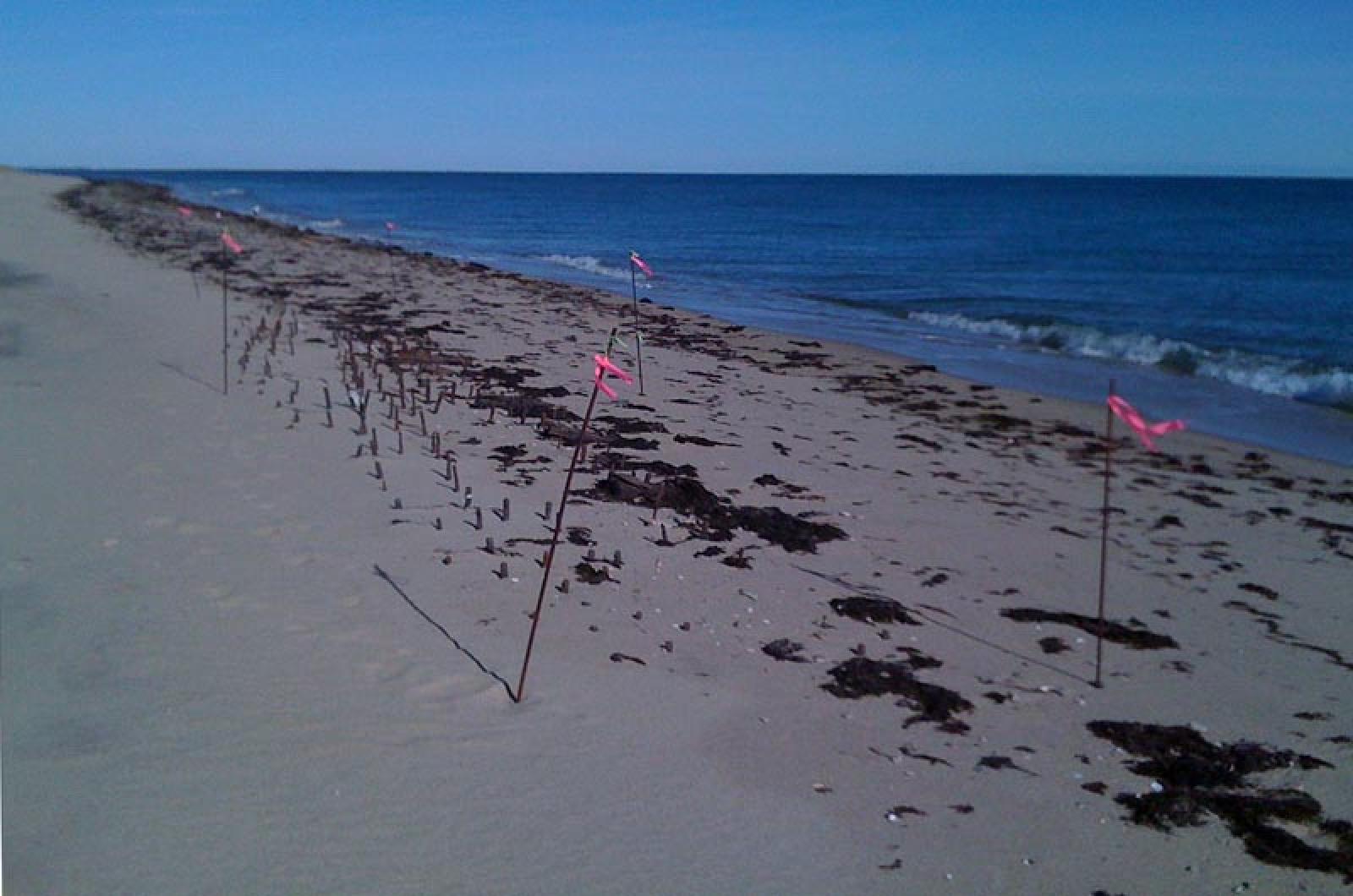The storm that slammed the Island in early November cancelled ferry trips and eroded beaches on Chappaquiddick. It also unearthed a mystery.
Pieces of what appears to be a 19th-century shipwreck were exposed on East Beach at Cape Pogue, said Chris Kennedy, Vineyard superintendent for The Trustees of Reservations.
Iron pegs that once attached wood planks to the ribs of the wooden ship are visible in neat rows on the beach opposite Shear Pen Pond, Mr. Kennedy said. They were unearthed by the northeaster that hit the beach the first weekend of November.
This is not the first time the shipwreck has been exposed, Mr. Kennedy said. “I guess I’ve seen it maybe five times in the last 25 years. It obviously has been there for a long, long time.
“I’ve never really heard just what wreck it might be,” Mr. Kennedy said.
The last time the ship was unearthed was during Hurricane Sandy in 2012.
A few years ago an Army helicopter flew over the Island to look for munitions buried on Chappaquiddick beaches, Mr. Kennedy recalled. “They found this weird anomaly,” he said: a perfectly shaped group of hundreds of little bombs. It turned out to be the iron spikes from the shipwreck.
Mr. Kennedy said that the remains are clearly from a wooden ship, because wooden timbers can be found beneath the iron pegs. The iron pegs and the wooden construction help hint at the date the ship was built.
Mr. Kennedy said that southwestern winds will bring sand back to the beach and eventually the pieces of the shipwreck will be buried again by a foot or two of sand. “By next summer you wouldn’t even know it’s there,” he said, and people will set up on the beach with blankets. Little do they know, he said, “they’re sitting right on top of an old, old shipwreck.”
The Trustees announced the discovery on Facebook and invited people to come see the wreck, but asked visitors not to disturb the site.
Arnold Carr, a Vineyard native, marine biologist and shipwreck expert, said at first early this week that he hadn’t heard about the discovery. He said the size of the timbers and the construction of the ship could be clues as to what type of ship it was.
“It could be anybody’s bet,” he said. His first guess upon hearing about a shipwreck on Chappaquiddick was the Mertie B. Crowley, a six-masted schooner that sank off Wasque in 1910. But the location of the wreck ruled out the Mertie B., Mr. Carr said.
After getting the coordinates of the shipwreck and doing some research, Mr. Carr narrowed the wreck down to a few likely candidates: the schooner Sarah Lewis, which sank in March 1853, the schooner Silver Bell, which sank in 1856, and the brig Empire, which sank in 1856. Mr. Carr said his guesswork was based on estimated position.
He cautioned that locations are approximate because they are based on the best available historic data available and said there are other wrecks in the general area that are unaccounted for.
Mr. Carr said there are also wrecks offshore, such as the Christiana, which wrecked on Hawes Shoal in 1866. But only the bilge of the Christiana remains, Mr. Carr said, and the rest of the hull is gone and could have washed ashore.
The early November northeaster did more than just expose a mysterious shipwreck. Elsewhere on Chappaquiddick, beaches were closed to over-sand vehicles last week because of erosion on beaches, though some beaches have now reopened.
With wind gusts reaching up to 60 miles per hour, Mr. Kennedy said one of three steel cables connected to the Cape Pogue Lighthouse snapped. “It’s when you have a storm like this that you realize that lighthouse is fairly lightweight and it does sway back and forth,” Mr. Kennedy said. He said the cable would be replaced.







Comments (4)
Comments
Comment policy »